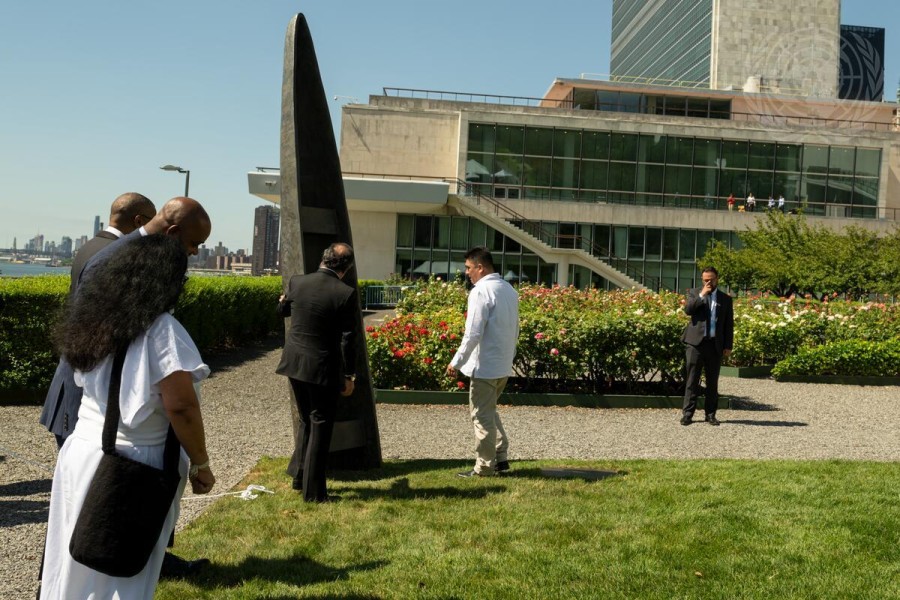In early July, Colombian President Gustavo Petro traveled to New York to address the United Nations Security Council (UNSC) at its quarterly briefing on the status of the implementation of the 2016 peace agreement between the Colombian government and the guerrilla group Revolutionary Armed Forces of Colombia (FARC). During his visit, Petro also helped inaugurate a monument installed in the garden outside the United Nations. The canoe-shaped sculpture, created by Colombo-Chilean artist Mario Opazo, is one of three such monuments that, under the agreement, were to be created from melted-down weapons once used by FARC to commemorate the country’s enduring pursuit of peace. The sculpture’s title “Kusikawsay” means “peaceful and happy life” in the indigenous Quechua language.
President Petro did not unveil the monument alone. Removing the cover alongside him was Diego Ferney Tovar, a former FARC combatant and signatory to the peace agreement. Tovar also became the first ex-FARC rebel ever to address the UNSC at the briefing that same day. This was a powerful gesture, honoring the bilateral nature of the peace deal. Notably, it also came following an explicit request from the Colombian government that former FARC combatants periodically attend the quarterly UNSC sessions. This makes sense, not only because they are signatories to the peace deal, but because they have an active role in overseeing its implementation.
In fact, the peace accord created several mechanisms that involve the participation of delegates from both the government and former FARC. One such entity is the Commission for the Follow-up, Promotion, and Verification of the Final Peace Agreement (CSIVI), of which Tovar is a member. This commission also closely coordinates with other specialized bodies to monitor the incorporation of the peace deal’s ethnic- and gender-sensitive approaches.
Over the past years, some of these institutions have receded into the background, especially during the administration of Petro’s predecessor, Iván Duque, known for his critical stance toward the peace process. But even now, under Petro’s stewardship, the CSIVI struggles to convene regularly and proactively address the binding issues of its mandate.
Still, there is something to be said for the persistence of these oversight mechanisms eight years into the peace agreement. After all, they were designed to outlive governments, even those that vehemently oppose the peace deal. And that was precisely what the negotiating parties intended for the implementation process: to become a state policy that is not entirely contingent on the political will of a sitting president.
This certainly does not shield the peace agreement from setbacks—far from it. That said, overcoming some of these setbacks will at the very least require a coordinated effort on the part of the signatories. As noted by the Special Representative for Colombia and Head of the UN Verification Mission in Colombia, Carlos Ruiz Massieu, during his address to the Security Council, “cooperation between the parties making use of the architecture established by the agreement remains essential to make progress on its implementation.”
Safeguarding this architecture is therefore not just about upholding the agreement’s bilateralism for its own sake. It represents a lifeline, a platform through which the parties can communicate and mutually reinforce each other’s commitment to the peace deal. It also serves as a poignant reminder that Colombia’s peace accord and its transitional justice model ultimately arose from a political negotiation between two parties—a process that was not just about laying down arms, but like the monuments about reshaping them into something different.
_______
PHOTO: Colombian President Gustavo Petro (third from right) and former FARC combatant Diego Ferney Tovar (second from right) unveil the Kusikawsay monument in the United Nations garden in New York on July 11, 2024. (Mark Garten/UN Photo)
